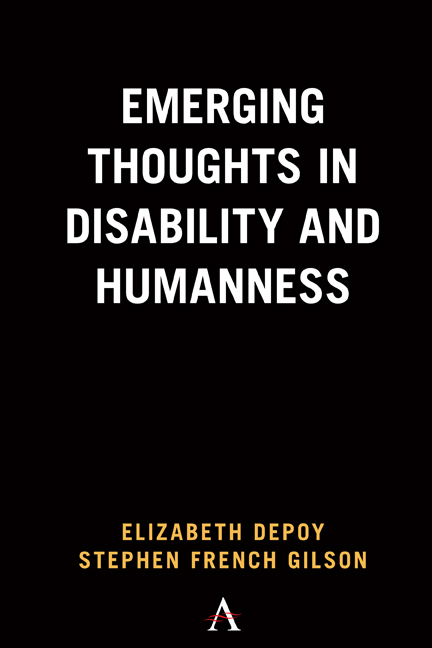Chapter 13 - Expansion and Commencement
Published online by Cambridge University Press: 13 May 2022
Summary
This conclusion posits desirable outcomes of renegotiation. We discuss and illustrate how redefining diversity unlocks the nonessentialist gate necessary for the humanness literacy agenda that we foresee. Individual and ubiquitous ownership of diversity eradicates division and thus allows collective commitment to innovation in order to expand the welcome mat and boundaries for diversity as humanness. Both the chapter and the book end with an urgent call for commencement of dynamic and sustained dialog, debate, tolerance, and acceptance of bodies representing the full continuum of human form and function as the basis for reinvention.
Scholarship, while a necessary beginning of the imaginary, does not rest on its laurels simply by answering “what and who” questions. The author must answer the difficult hows. In this final chapter, we therefore propose and illustrate a present and future vision of principles to respond to expansive humanness literacy.
First, a snippet summary of the previous chapters is offered as the basis for the conclusions put forth in this chapter. We began by exploring legitimacy and its application to humanness, examining the temporal and disciplinary. The diagnosed disabled body then made its appearance as an offender of medicalized, acculturated normalcy, or what has been referred to as prototype and desirable humanness. The three disability model genres, medical, social and interactive, were then introduced to characterize and critically read how violators are crafted by the normal curve and science narratives, with the interactive disjuncture model (DePoy and Gilson, 2011) held in abeyance as the potential framework for healing the binary rift between prototype and something elses. Built and green environment, narrative, and visual and digital imagery were read for their meanings, their exclusions, and who is advantaged as prototype human and its nonexample. In the next section, a continuum of three response levels, revision, reinvention, and denial to the offender body were forensically analyzed, both for their “rights and wrongs.”
Finally, the initial chapter in this two chapter conclusion (Chapter 12) posited a reinvention of humanness, which we referred to as humanness literacy, in which rereading the human becomes the equivalent of embodied and experiential diversity as both changing and changeless. Thus, in this narrative of humanness the only essential characteristics of the human are diversity and imperfections (Sandel, 2016), to which response is invited.
- Type
- Chapter
- Information
- Emerging Thoughts in Disability and Humanness , pp. 195 - 208Publisher: Anthem PressPrint publication year: 2022



